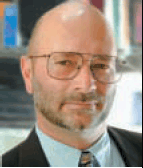After a decade of growth in teleradiology; now what's next?
It's been a bit more than a decade since teleradiology really started to take off in the U.S. Fed by a radiologist shortage in the early 2000s and a desire by many practices to shed their night call work.
It's been a bit more than a decade since teleradiology really started to take off in the U.S. Fed by a radiologist shortage in the early 2000s and a desire by many practices to shed their night call work, teleradiology companies grew and prospered throughout the decade to the point where they are today: large and diverse organizations reaching into nearly all aspects of radiology practice, and also a potentially a disruptive force that could dramatically challenge traditional styles of practice.

Inside, beginning on page 14, you'll find a series of vignettes by some who have followed the development of teleradiology during that time. They are, for the most part, positive about the contributions teleradiology has provided to the profession. It's relieved night call pressure, but it's also provided expanded access to subspecialty interpretations, around the clock and geographically. For some radiology practices, teleradiology technology has been a way for them to expand their reach in their community and regionally.
As we've reported over the years, the decade brought some dramatic changes. NightHawk, then Virtual Radiologic became publicly traded companies. Venture capitalists roamed the RSNA exhibit floor looking for investment opportunities in teleradiology-and found some. Then Virtual Radiologic was purchased by a private global investment company and, in its turn, announced plans to buy out NightHawk.
The combination of NightHawk and Virtual Radiologic will create the largest radiology practice in the country, with 325 radiologists serving 2700 healthcare facilities in 50 states. According to Virtual Radiologic CEO Rob Kill, the combined organization will control a bit more than 1% of the $20 billion market for radiology professional services.
Most of the sources interviewed for our article were not worried about the acquisition, but those who participated in our online poll asking about its impact on radiology practice were not as confident. With 145 responses as of Nov. 9, just 18% said the impact would be positive. Another 55% said the impact would be negative. Eighteen percent said it would be neither positive nor negative and the rest were undecided.
Thus, while teleradiology has clearly become a part of the fabric of radiology practice, there is still some unease about where it's going to take us. One possible path is apparent in data compiled by the KLAS research group and released in October. Traditionally, teleradiology contracts have been negotiated through local radiology practices. Both NightHawk and Virtual Radiologic have affirmed their commitment to this approach.
KLAS researchers, however, found that hospitals and clinics hold close to 40% of the teleradiology contracts. One of the researchers was quoted as saying, “In several situations, teleradiology decisions are being made at the health system level.”
KLAS also observed that expectations are for greater teleradiology volume in the years ahead, and they note that providers are showing growing interest in receiving final reads from teleradiology companies. If this becomes pervasive, where does it leave the local radiology practice?
While Virtual and NightHawk have pledged to not compete with local practices for radiology contracts, we know other teleradiology companies are not similarly committed. Further, demands by those with an economic interest in radiology services have a way of changing even the most altruistic of attitudes.
Combine this with a desire by hospital executives to wield more control over imaging, and you could see a decade ahead in teleradiology that's even more eventful than the one just past.
New Collaboration Offers Promise of Automating Prior Authorizations in Radiology with AI
March 26th 2025In addition to a variety of tools to promote radiology workflow efficiencies, the integration of the Gravity AI tools into the PowerServer RIS platform may reduce time-consuming prior authorizations to minutes for completion.
The Reading Room: Artificial Intelligence: What RSNA 2020 Offered, and What 2021 Could Bring
December 5th 2020Nina Kottler, M.D., chief medical officer of AI at Radiology Partners, discusses, during RSNA 2020, what new developments the annual meeting provided about these technologies, sessions to access, and what to expect in the coming year.
Study Explores Impact of Insurance on Treatment and Referrals for Patients with Uterine Fibroids
February 19th 2025Women with uterine fibroids and Medicaid coverage are significantly more likely to be treated with uterine artery embolization than those with commercial insurance, according to newly published research.